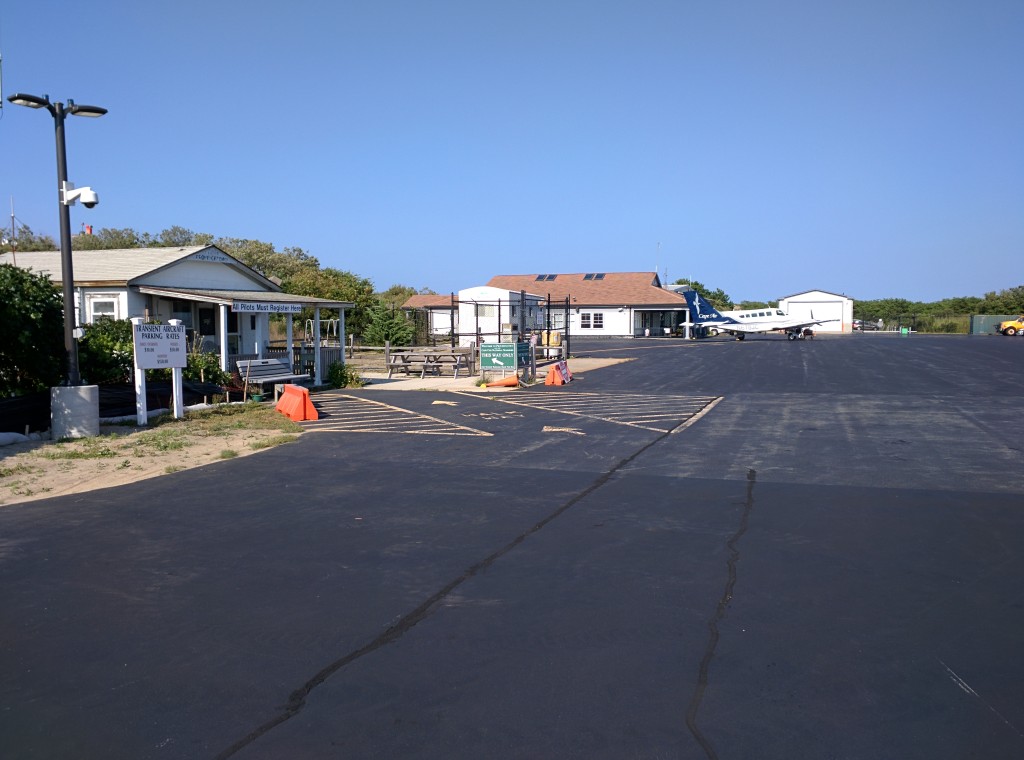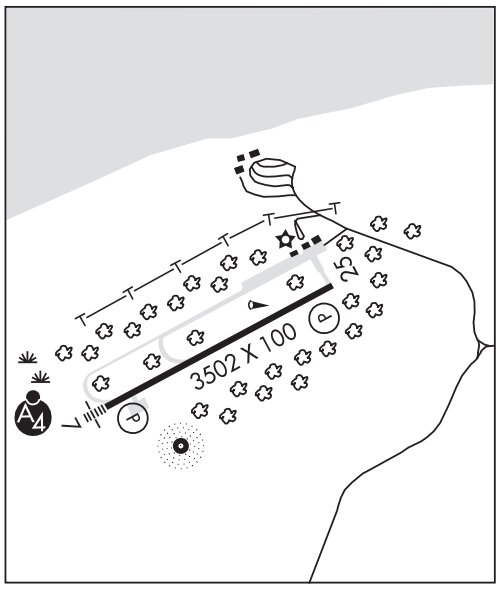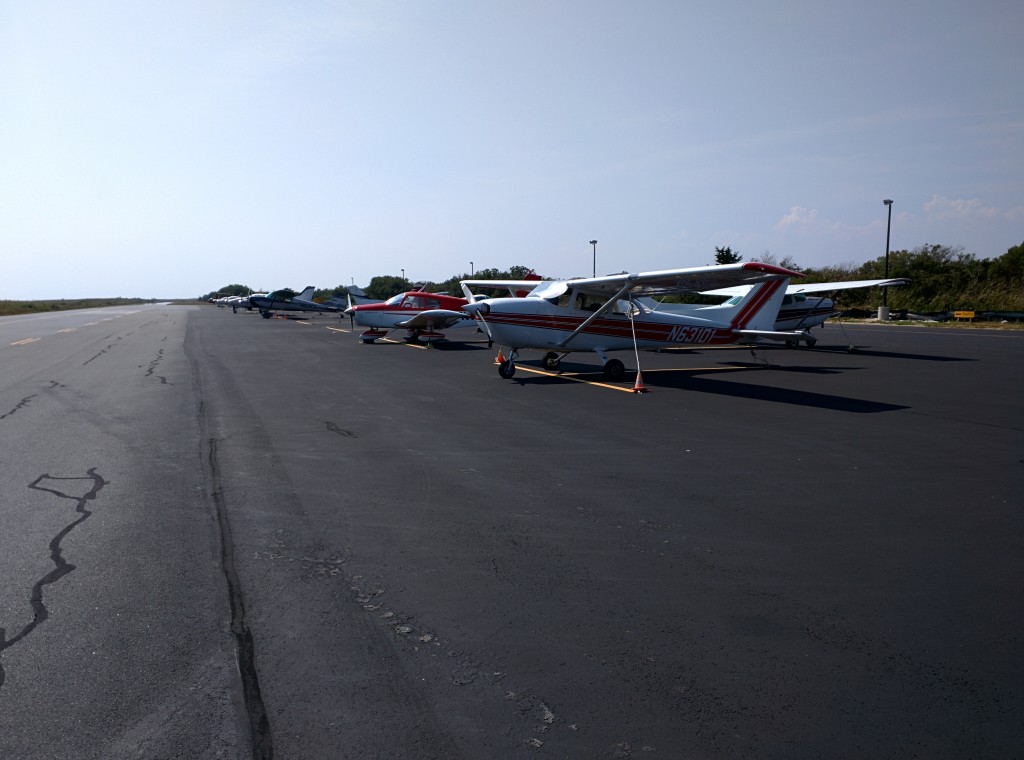Located on the furthest tip of Cape Cod, Provincetown Municipal Airport is surrounded on three sides by the Atlantic Ocean and offers one of the more challenging experiences available for pilots of small airplanes. The location essentially in the middle of the Atlantic Ocean means high winds and frequently gusty conditions prevail most of the year, and unpredictable conditions on short final are not uncommon. Your reward for making the journey, however, is well worth the risk: instead of a three hour car ride from Providence, Massachussets to the town of Provincetown on Cape Cod, your travel time is only about 30 minutes each way. Especially during the summers, avoiding the madness that is Route 6A might be well worth the challenge and the expense.
Getting There
Provincetown Municipal Airport is the most remote airstrip on Cape Cod. As such, there aren’t any IFR routes that get you directly to the field. IFR flights filing to Provincetown and arriving from the west should expect to be routed via V151 to the GAILS intersection, and then direct KPVC via radar vectors.
Those aircraft with functioning ADFs still on board can use the Provincetown NDB (PVC) for navigation, or for everyone else in the modern age the Marconi VOR (LFV) is only about 9 NM from the field. Flights should expect to get radar vectors to the field, but using the Marconi VOR for filing purposes or as a backup navigation source isn’t a bad idea.
Once you’re in visual range of the field, you can figure it out. Provincetown is on the very tip of Cape Cod, and you’d need to be blind enough to fail a 3rd class medical to miss it. The airfield is located in the dunes to the north of Provincetown proper and does tend to blend in with the surrounding colors of the terrain, but when you’re within a few miles you can’t miss it.
KPVC is one of those rare small non-towered airports with an ILS, but it’s only available on runway 7. Runway 25 has an NDB approach, or (as usual) both runways offer an RNAV (GPS) approach for those who are so equipped.
Airport
There’s a single runway at Provincetown Municipal Airport, and a single taxiway servicing that runway. 7/25 is a 3,502 foot long piece of concrete with approach lighting on 7 and nothing whatsoever on 25. The proximity to the water (and the heat radiating off the sand dunes surrounding the airport) make the approach itself somewhat challenging, and the likelihood of gusty crosswind conditions is extremely high.
Taxiways service both ends of the runway, but there’s an extra high-speed taxiway available for those landing on runway 25.
Cape Approach is available on the ground at the airport on 120.65 for obtaining IFR clearances as well as closing IFR flight plans so you don’t have to cancel your IFR clearance in the air if you don’t want to — and given the squirrely winds I recommend waiting until you’re on the ground.
The transient parking area is located south west of the FBO and terminal, and there are two rows of tie-downs available for use. Each tie-down location has a rope attached to the metal rings in the concrete, but getting a good knot in that rope might be somewhat impossible. Bring your own tie-down straps if possible.
Should the paved parking area be completely full (as it was after I arrived Labor Day weekend) the grass area along the north end of the taxiway can be used for tie-downs as well. In short, if you’re in a small single engine airplane you shouldn’t worry too much about reserving a parking spot for your weekend on the Cape. And if you’re in a multi-engine airplane you have so much money you don’t care about such trivial things.
Pilots arriving during the summer may be greeted at the general aviation shack on the tarmac and asked to sign in there, or those arriving at other times should head inside to the main terminal to get signed in and registered. DO NOT WALK DIRECTLY TO THE TERMINAL — Cape Air makes commercial flights to and from the airport, and their ramp is a secure area. There’s a clearly marked walkway to use and it takes you right to the door of the terminal.
Taxi service is available into town, and there’s a shuttle bus that runs occasionally during the summer for a nominal fee.
FBO Facility and Fees
Provincetown Airport is run by Cape Air, and their check-in desk doubles as the FBO. Located on the left side of the lobby general aviation aircraft are required to register and pay a tie down fee. Day flights or single night excursions are $10, those staying for 7 days can pay $50 for the priviledge of keeping their aircraft at KPVC, and those staying an entire month can have their parking space for $150. This can all be arranged on the fly and on arrival, especially during the summer season.
The commercial terminal is used for commercial flights as well as general aviation, so while there is a flight planning office and restroom available it isn’t quite as nice as the dedicated GA FBOs. There is, however, a rental car company in the office during the summer.
100LL AVGAS is available on a full service basis from the front desk. If you ask very nicely you might be able to leave your credit card number with the desk and have them charge you when they’re finished, meaning that you won’t need to go back and pay when you’re finished in town.
In the Area
Provincetown is a fun town on the inner side of Cape Cod that has a lot to offer. From fishing excursions to shopping along Commercial Street there’s something for everyone to enjoy. The city also has some incredible restaurants, including many seafood establishments who get their ingredients fresh from the local fishermen every day.
If P-Town isn’t your speed there are endless miles of beaches within walking distance of the airport.
Departure
When you check in with the desk and pay your tie-down fee you should ask for the gate code to get back into the airport. The gate code works 24/7, and will give you direct access to the ramp whenever you need it.
Cape Approach is available on 120.65 while on the ground for flight following or IFR clearance delivery. Expect them to ask you to call back when you are #1 for departure, and then hold or release.
The hot sands around Provincetown and the naturally hot climate during the summer combine to make for some high density altitude conditions with little lift initially. A straight-out departure from either runway will very quickly put you out over the water, so be aware of that fact in case of engine failure on takeoff.
Due to the size of Cape Cod, Cape Approach may not be immediately available on the radio. Climbing to 2,000 feet is where I usually start to be able to talk to them, so be aware and plan accordingly.



